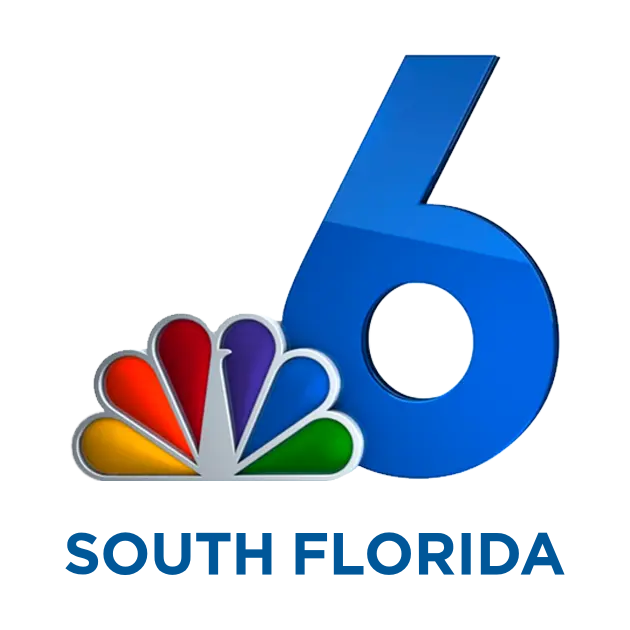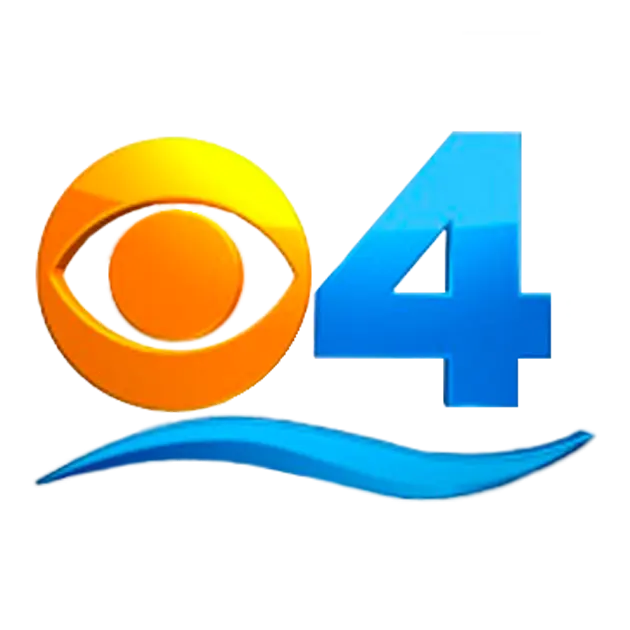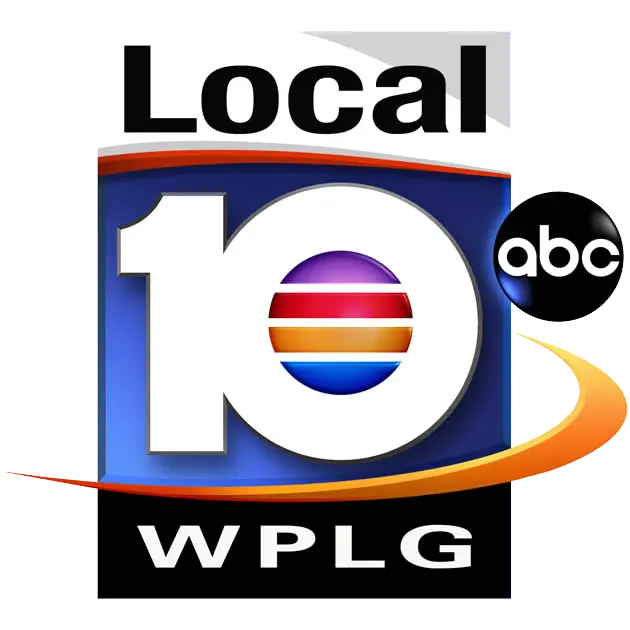















Florida is a paradise for horse lovers. With over 385,000 horses, the state ranks third in the U.S. for its equine population. Nearly every breed can be found here, supporting activities like breeding, training, racing, polo, rodeo, and show events. Whether it’s dressage, show jumping, or trail riding, Florida offers year-round opportunities for riders of all skill levels.
Beyond recreation, horses fuel Florida’s economy. The equine industry contributes $6.8 billion to the state’s GDP and supports 244,200 jobs. Horse owners, trainers, and breeders invest billions into the industry.
The state is also home to over 600 Thoroughbred farms and training centers, with Ocala-Marion County being a major hub. Florida-bred horses have made history, winning Triple Crowns, Kentucky Derbies, and national championships.
With so many horses and riders, accidents are inevitable. Over 100,000 horse riding accidents occur in the U.S. every year. Here is where the Florida horse riding accident lawyers of Madalon Law come in.
Horses are powerful and unpredictable, even for experienced riders. Falls, kicks, and collisions can lead to serious injuries. Faulty equipment, unsafe riding conditions, and negligence make matters worse.
If you or a loved one suffered injuries in a Florida horse riding accident, you may have legal options. That’s where Madalon Law comes in.
After an accident, medical bills and lost wages add up fast. Many riders assume they can’t take legal action because they signed a waiver. But waivers don’t always protect negligent parties from liability. A skilled Florida horse riding accident lawyer can review your case and help you seek compensation.
At our law office, we fight for injured riders. Our legal team investigates accidents, gathers evidence, and builds strong personal injury cases. If you were injured in a horse riding accident, you don’t have to go through this alone.
Contact Madalon Law today for a free consultation.
Understanding the Causes of Horse Riding Accidents in Florida
Horseback riding is a thrilling activity that many people enjoy, but it also comes with risks. Whether you’re an experienced rider or just starting out, accidents can happen when you least expect them.
Understanding the common causes of these accidents is the first step in preventing them. Let’s explore the factors that can lead to horse riding accidents and how they can impact riders.
Rider Inexperience and Lack of Training
One of the most common causes of horse riding accidents is rider inexperience. A new rider might not know how to properly control a horse or react to sudden situations. Horses are large, powerful animals, and their behavior can change quickly. Without the right training, a rider may panic or make the wrong decision, leading to a fall or injury.
Even experienced riders can face challenges. Horses can be skittish and lack of proper training on how to handle certain situations can result in accidents. For example, a rider might not know how to properly handle a horse that becomes frightened or startled. Without the right guidance, these situations can quickly spiral out of control.
If you’re a beginner, it’s important to take riding lessons with a qualified instructor. This can help you build the skills needed to ride safely. For experienced riders, ongoing training and practice can help keep your skills sharp and your reactions fast in emergency situations.
Horse Behavior and Temperament
Horses are naturally strong and independent animals and not always predictable. For instance, a horse might get spooked by a loud noise or a sudden movement. This can lead to the horse bolting, bucking, or running away, which increases the risk of a fall or other injury.
Some horses may also have aggressive behavior, especially if they’ve not been trained or handled properly. In these cases, the rider might get kicked, bitten, or thrown off. Even well-trained horses can sometimes act out, especially if they are tired, anxious, or uncomfortable.
It’s important for riders to be aware of a horse’s behavior. Knowing when a horse is getting nervous or uncomfortable can help prevent an accident. Additionally, having an experienced rider or trainer nearby can help in situations where the horse becomes finicky.
Faulty Equipment and Poor Maintenance
Another major cause of horse riding accidents is faulty equipment. Riding equipment such as saddles, reins, and stirrups is designed to keep both the rider and horse safe. However, if the equipment is poorly maintained or defective, it can fail, leading to an accident.
For example, a broken stirrup or a loose saddle can cause the rider to lose their balance or fall off the horse.
Saddle fit is another issue. If a saddle is too tight or too loose, it can cause the rider discomfort or even lead to the rider being thrown off. Horses that are uncomfortable in their gear might behave in volatile ways, increasing the risk of an accident.
Before riding, it’s important to inspect all equipment to ensure everything is in working order. Regular maintenance of tack, reins, and saddles is also essential to avoid accidents due to faulty equipment.
Unsafe Riding Conditions
Riding conditions play a big role in preventing accidents. Poor trail conditions, such as uneven ground, loose rocks, or mud, can cause horses to stumble and fall. Additionally, poorly maintained riding arenas with deep holes or debris can be dangerous.
Weather can also be a factor. Wet or slippery conditions increase the risk of a fall, especially if the horse’s hooves can’t get proper traction. Similarly, riding in extreme heat or humidity can tire out both the horse and rider, making accidents more likely.
It’s important to always check the riding area before getting on a horse. Look for any obstacles or hazards that could cause the horse to trip or stumble. Riding in good weather conditions and on well-maintained trails is key to reducing the risk of accidents.
Negligent Supervision and Lack of Safety Measures
In some cases, accidents happen because of negligent supervision. If a rider is left alone or is not given proper instructions, they might end up in a dangerous situation. This is especially true for young riders or beginners who may not know how to handle certain situations.
For example, a trainer or instructor may fail to properly supervise a rider. Or they may allow them to ride in unsafe conditions or without proper gear. This increases the chances of an accident happening.
Similarly, horse riding facilities or stable owners may fail to implement necessary safety measures. This include ensuring the horses are healthy and well-trained, or maintaining safe equipment.
As a rider, it’s important to always ensure that you have proper supervision, especially if you’re new to riding. Trainers and instructors should be knowledgeable and attentive to ensure safety at all times. Additionally, stable owners and riding facilities should be held accountable for ensuring safety standards are in place.
The Role of Alcohol and Drugs
While not as common as other causes, the use of alcohol or drugs can greatly increase the risk of accidents. Whether it’s the rider or someone supervising the ride, impairment from alcohol or drugs can cause poor judgment and slower reaction times. This is particularly dangerous in the fast-paced environment of horseback riding.
Riding under the influence of alcohol or drugs can severely impair your ability to safely control a horse or react to dangerous situations.
Other External Factors
Other external factors can contribute to accidents as well. For example, unexpected interactions with other riders, pedestrians, or vehicles can startle a horse. Similarly, wild animals or other hazards in the environment, such as thunderstorms, can frighten a horse.
While some of these factors are beyond anyone’s control, understanding them can help riders remain vigilant and take precautions when riding.
Horse riding accidents can happen for many reasons, ranging from rider’s lack of training to faulty equipment. By understanding these common causes, riders can take the necessary steps to reduce their risk and stay safe while enjoying their time with horses.
However, accidents still happen, and when they do, the consequences can be severe. If you have been injured in a horse riding accident, it’s vital to know your rights and understand how the law can help.
Settings Where Horse Riding Accidents Commonly Occur in Florida
Accidents can happen in any setting where horses are involved. However, some places pose greater risks due to the nature of the activity or the experience level of the rider.
Let’s take a closer look at different types of horse riding accidents based on various situations:
Equine Accidents in the Workplace
Employees working with horses—such as stable hands, grooms, trainers, and caretakers—face unique risks. These accidents can happen while cleaning stables, handling horses, or managing their daily routines. The work often involves physical contact with horses, and any lapse in safety or equipment failure can result in injuries.
For instance, a worker may be kicked by a horse while feeding. They could also be knocked down when handling an unruly animal. These types of accidents are very common in the equine industry. That’s why employers have a responsibility to ensure safe working conditions and proper training for their employees.
Accidents at Competitions or Shows
Competitions and shows, whether for dressage, show jumping, rodeo, or racing, create high-pressure environments. The intensity of these events can sometimes lead to accidents. This is doubly true if the horse becomes startled or nervous due to the crowd, noise, or unfamiliar surroundings.
Accidents during these events can involve falls, collisions, or injuries caused by the horse itself, like being kicked or trampled. Riders are often more focused on winning, which can sometimes lead to unsafe handling or pushing the horse beyond its limits. This can result in injury and accidents for both the rider and the animal.
Accidents While Training
Training sessions, particularly for horses that are learning new skills or preparing for competition, can carry higher risks. Horses are often taught to perform complex maneuvers. Accidents can occur when the horse gets spooked, loses balance, or doesn’t follow instructions properly.
Untrained riders are also at risk if they lack the skills to guide the horse or handle its anxiety and fear.
In some cases, trainers or owners may administer drugs to horses. However, this practice is strictly regulated by equine organizations and governing bodies.
Drugs may be used for pain, performance, or calming the horse. However, it is illegal and unethical if used to gain an advantage in competitions.
Drugging horses is a form of doping, a serious violation of equine welfare laws. Many events require drug tests to ensure horses are not using banned substances.
Here are a few reasons why drugs may be used:
Pain Management: If a horse is in pain from an injury, trainers may use medication to relieve discomfort. However, using drugs to mask pain is a form of animal abuse and can lead to further harm.
Performance Boost: Some trainers might use drugs to increase a horse’s performance, making them run faster or jump higher. This is illegal in most competitive settings and can have serious outcomes for both the horse and the trainer.
Calming the Horse: For horses that become agitated or overly anxious, trainers may use sedatives to calm them. While this is sometimes done for the safety of the rider, it can also be misused to suppress the horse’s natural behavior in competitions.
The penalties for drugging horses are severe, including suspensions, fines, and the disqualification of horses from races or shows. In addition to the legal implications, this behavior is harmful to the health and wellbeing of a horse.
If you’re involved in an incident related to a drugged horse, it’s important to consult a qualified horse riding accident attorney in Florida to understand your rights and the actions you can take.
Types of Injuries You Can Suffer From Horse Riding Accidents in Florida
Horseback riding accidents can cause a wide range of injuries. How severe the injury is depends on the situation. Here are some common types of injuries you might experience:
Head Injuries
Head injuries are among the most serious risks of horseback riding. A fall or a horse’s kick to the head can result in concussions, skull fractures, or even brain injury. The risk of these injuries increases if a rider is not wearing a helmet.
Helmets act as a cushion for the head, reducing the force of impact in case of a fall or collision. A concussion can lead to symptoms such as headaches, dizziness, and confusion.
In more severe cases, brain injuries can result in long-term cognitive impairment or memory loss. Always wear a properly fitted helmet to protect yourself from these potentially life-threatening injuries.
Broken Bones
Broken bones are a common injury in horse riding accidents. These often happen when a rider falls off the horse or is kicked by the horse.
When a rider falls, they can land at a wrong angle, causing breaks in their arms, legs, or ribs. A horse’s powerful kick can also cause fractures, especially in the ribs or limbs.
These injuries can vary from minor fractures that heal with a cast to more serious ones requiring surgery or pins. Broken ribs can be especially painful, making it difficult to breathe. Meanwhile, broken limbs can impair a rider’s ability to return to riding or normal activities.
If you break a bone, you should get immediate medical attention so that it aligns and heals properly.
Spinal Injuries
Spinal injuries, though less common, can be extremely serious and life-changing. These injuries can result from a fall or being thrown off a horse, especially if the rider lands on their neck or back.
Spinal injuries can lead to permanent nerve damage, paralysis, or even death.
In some cases, a fall may misalign your vertebrae, which can be very painful. If you suspect a spinal injury, it’s critical to avoid moving and seek medical help promptly.
Finding and treating a spinal cord injury early is key to preventing more damage and improving chances of recovery.
Soft Tissue Injuries
Soft tissue injuries, including sprains, strains, and bruises, are common in horseback riding. These injuries occur when muscles, ligaments, or tendons are overstretched or torn.
Horseback riding is a physically demanding activity that requires balance and coordination. If a rider falls or is suddenly jolted, they can strain muscles in their back, neck, or legs. These injuries may cause pain, swelling, and limited range of motion.
Treatment often includes rest, ice, compression, and elevation (R.I.C.E), followed by physical therapy to regain strength and flexibility. Though not as serious as bone fractures, untreated soft tissue injuries can lead to long-term discomfort and may affect a rider’s ability to ride.
Joint Injuries
Joint injuries are often the result of a sudden fall, twist, or impact during a horseback ride. Knees, elbows, wrists, and ankles are the most common places to get these injuries.
Joint injuries such as sprains, dislocations, and fractures can occur when a rider lands in an awkward position. A horse’s sudden movements, such as abrupt stops or quick turns, can also put stress on a rider’s joints. Swelling, bruising, and limited mobility are common signs of a joint injury.
Treatment may include immobilizing the joint, applying ice, and seeking professional care. In severe cases, you may require to repair ligaments or tendons.
Joint injuries can take time to heal, and you may need rehabilitation for a full recovery.
Lacerations and Cuts
Lacerations and cuts are common in horse riding accidents. These injuries happen if a rider is kicked by a horse, falls on rough terrain, or is struck by a sharp object, such as a branch or a fence. Horses have strong hooves, and a direct kick to the rider’s body can cause deep cuts, especially to the legs, arms, or face.
Lacerations can also occur if a rider lands on hard ground or collides with a fence or other obstacles. These cuts can range from minor to severe, depending on the force of the injury.
If you have sustained cuts while riding a horse, you need to get treated quickly to prevent infection. Stitches may also be needed for deeper cuts. Your doctor may also recommend wound care and follow-up appointments to avoid complications.
Internal Injuries
Internal injuries are often hidden and can be difficult to detect right away. These injuries can result from a horse’s kick, a fall, or a heavy impact. The force of an impact can damage vital organs such as the liver, kidneys, or spleen.
Internal bleeding can also occur, which can lead to shock if not treated quickly. Symptoms of internal injuries may include dizziness, nausea, difficulty breathing, and swelling in the abdomen.
If you suspect internal injuries, you need to seek immediate medical attention. Timely diagnosis and treatment can help prevent serious complications and ensuring a full recovery.
Shoulder and Arm Injuries
Shoulder and arm injuries are very common for riders, especially when they try to break their fall. The arms are usually the first to hit the ground when a rider falls off their horse. This can lead to fractures or dislocations of the shoulder, elbow, or wrist.
A horse’s kick can also injure the arms or shoulders, causing fractures or deep bruising. Treatment for shoulder and arm injuries can range from wearing a sling to surgery.
For dislocations, the doctor will need put your joint back into place first. Physical therapy can also help restore function and strength after these types of injuries.
Ankle and Foot Injuries
Ankle and foot injuries are common in horseback riding accidents. A rider’s foot can get caught in the stirrup during a fall, leading to twists or fractures.
Horse hooves can also cause injuries if the horse steps on you. A rider may break a toe, sprain an ankle, or suffer a more serious injury to the foot.
These injuries can range from mild sprains to fractures that require a cast or surgery. Treatment usually includes rest, ice, and elevation, followed by rehabilitation exercises. In severe cases, victims may need suregry to fix broken bones or tendons.
Psychological Injuries
Horse riding accidents can cause psychological injuries as well. After a traumatic fall or a serious injury, riders may experience anxiety or fear about riding again. Some may develop post-traumatic stress disorder (PTSD), which can affect their daily life.
Psychological recovery is just as important as physical recovery. Therapy and counseling can help riders work through their trauma and regain their confidence. Support from family and friends is also important in overcoming emotional distress after an accident. If you’re experiencing fear or anxiety after an accident, seeking professional help can aid in the healing process.
If you’re ever involved in a horse-related injury, you need to get medical care right away. If the accident is due to someone else’s negligence, legal assistance from Florida horse riding accident attorneys can ensure you get fair compensation for your expenses.
Florida’s laws on equestrian accidents are designed to protect both horse riders and those who own or train horses.
If you are involved in an equestrian accident, you need to be aware of your rights and responsibilities. Florida has a mix of laws that address liability, insurance, and how to handle accidents that happen while riding horses.
The Florida Equine Activity Liability Act
Florida has a specific law called the Equine Activity Liability Act (Section 773.01 – 773.05). This law shields horse owners, trainers, and other people involved in equine activities from liability. The act aims to protect people in the horse business from lawsuits caused by accidents during riding, training, or shows.
Under this law, a horse rider assumes some level of risk when participating in equestrian activities. This means if you get hurt while riding, you may not be able to hold the horse owner or trainer responsible. The law recognizes that horses are animals with a mind of their own. Therefore, equine activities carry certain risks, like unexpected horse behavior, uneven ground, or accidents involving other horses or objects.
However, this immunity isn’t absolute. It only applies if the incident is truly an inherent risk, such as a horse bucking or getting spooked. The law does not protect horse owners or trainers if they are negligent (more on this below).
Required Notice
Equine professionals and sponsors are required to inform participants about the risks involved in equine activities. This is usually done with a written notice or sign that states: “Under Florida law, an equine activity sponsor or equine professional is not liable for an injury to, or the death of, a participant in equine activities resulting from the inherent risks of equine activities.”
If they fail to provide this warning, it can lead to liability.
Assumption of Risk
One of the key ideas in Florida’s equine laws is the assumption of risk doctrine. This means that if you decide to ride a horse, you are accepting the fact that certain risks come with it. You know there’s a chance the horse might kick you, throw you off, or injure you in another way.
This assumption of risk applies to almost all horseback riding activities, including trail rides, competitions, and riding lessons.
However, even if you assume some risk, you can still file a claim if the injury was caused by something that was outside the normal risks. If someone’s negligence led to the accident, you may be able to hold them accountable.
Florida’s Comparative Negligence Law
Florida follows the comparative negligence rule. This means that if you are partially at fault for an accident, you can still seek recompense. However, your reward may be reduced.
For instance, if you were not wearing a helmet when you were injured, and this contributed to your injury, the court might lower your payout because you were partly to blame.
In other words, the court will compare the actions of all parties involved. If the other party is mostly at fault, you may still receive most of the compensation.
Equine Insurance Requirements
Many horse owners and equine businesses in Florida are required to carry insurance. This helps protect the riders, trainers, and others involved in equine activities in case of accidents. Equine liability insurance is one of the best ways to ensure that you’re protected in case of an injury.
The insurance policy may cover the cost of medical expenses, lost wages, and sometimes even legal fees if the accident leads to a lawsuit. However, the exact coverage depends on the specific terms of the policy. It’s important to check whether the insurance covers injuries to riders and spectators.
Equine Accident Lawsuits
If you are injured in a horse-related accident and you believe negligence played a role, you can file a lawsuit. In Florida, personal injury lawsuits related to equine accidents are handled just like any other accident claim. You would need to prove that someone was negligent and that their actions caused your injury.
Florida has a statute of limitations for personal injury claims, which is two years from the accident date. If you don’t file your claim within this time, you may lose the right to pursue compensation. It’s important to consult with an experienced Florida personal injury attorney as soon as possible after an injury.
Horse riding is an exciting and rewarding activity. However, it comes with its fair share of risks. Whether you’re riding for pleasure, training, or in a competition, accidents can happen. In such cases, understanding who can be held liable is vital:
When a Stable Owner is Responsible
Stable owners have a major role in ensuring the safety of their horses and riders. As the property owner and provider of the horses, equipment, and training environment, they have a duty of care to prevent accidents caused by negligence.
Let’s break down when a stable owner might be held responsible.
Duty of Care and Responsibilities of Stable Owners
A stable owner has a legal duty to maintain a safe environment for riders. This includes providing well-maintained horses, safe equipment, and a properly managed riding area. Stable owners are responsible for:
When Dangerous Conditions on the Property Contribute to an Accident
Stable owners must ensure that the facilities they provide are free from dangerous conditions. These include:
Uneven Ground: Riding in an area with potholes, loose gravel, or uneven footing can lead to falls and injuries. A stable owner is responsible for properly maintaining the riding area.
Poorly Maintained Fencing: Fences must be secure to prevent horses from escaping or being startled by a broken or sagging fence.
Lack of Signage: Clear warning signs must be placed to notify riders of potential dangers. This includes slippery surfaces or aggressive horses.
If a stable owner knows about these dangers and doesn’t fix them or warn riders, they can be blamed if someone gets hurt. For example, if a rider falls because the arena is bumpy and there are no warning signs, the owner might be responsible.
The Role of Stable Staff and Trainers
Stable owners must ensure staff and trainers are properly trained. This includes safe handling of horses and riders. If a trainer provides poor instruction or a staff member is negligent in handling a horse, the stable owner may be held responsible for the resulting injury.
For example:
Poor Instruction: For example, a trainer might let a beginner ride a difficult horse. If the rider gets hurt, the stable owner could be at fault.
Negligence in Horse Handling: Stable staff must ensure that horses are handled and secured safely. They should also check each horse’s condition. Failure to do these things can cause accidents and make the stable owner liable.
Breach of Duty and Foreseeability
For a stable owner to be found liable, there must be a breach of their duty of care. This means that they failed to act in a way that a reasonable person would have, given the circumstances.
The breach must also be. This means the stable owner must have known or should have known that their actions (or inactions) could lead to an accident.
For example:
A stable owner knows that a horse is prone to bolting. If he allows a beginner rider to ride the horse, they could be found liable if an accident occurs.
Stable owners must also fix dangerous conditions. For example, a broken fence is a hazard. If the owner knows about it but doesn’t fix it, they are responsible for any resulting injuries.
Premises Liability
Stable owners are also subject to premises liability laws. These laws state that the property owner is responsible for maintaining a safe environment for all visitors. This includes riders, guests, and anyone else who might enter the stable. If someone is injured on the property due to unsafe conditions, the stable owner can be held liable.
When Another Rider Can Be at Fault
Aside from the stable owner, riders can also be responsible for accidents. Horse riding is a social activity, often involving multiple riders in the same area. In these situations, accidents can occur due to the actions of other riders as well.
Here’s when another rider might be at fault:
Reckless or Inexperienced Riding
Riders are responsible for their actions while riding. If a rider’s reckless or inexperienced behavior causes an accident, they can be held liable. Examples include:
Sudden Movements: A rider causes a horse to startle by making a sudden movement or loud noise and this result in injury to another rider. The rider who caused the incident can be at fault.
Ignoring Safety Rules: If a rider fails to follow the rules of the riding arena, they can be held responsible for any accidents that occur as a result. This includes actions like riding too fast in a designated walk-only area.
Improper Passing: If a rider passes too closely to another rider, causing a collision or injury, they could be held liable for the accident.
Failing to Control the Horse
Riders are responsible for controlling their horses at all times. If a rider loses control of their horse and causes an accident, they can be held liable.
For example:
If a rider allows their horse to run out of control, causing another rider to fall, the rider who lost control could be responsible for the injury.
If a rider fails to control their horse near another rider and causes a collision, they could be liable for any resulting injuries.
Horse Aggression
If a rider has a horse known for aggressive behavior and fails to manage it appropriately, they can be held liable for any injuries.
Horses can be jumpy. If a rider does not take the necessary precautions to control their horse, they could be at fault for any incidents that occur. For instance:
A rider allows their horse to charge or kick another rider’s horse. The rider with the aggressive horse may be liable for any injuries caused.
As you can see, liability in horse riding accidents is complex and depends on several factors. Stable owners, other riders, and faulty equipment can all result in accidents that result in injuries.
Stable owners must maintain safe facilities, provide properly trained horses, and ensure that equipment is in good condition. Riders are responsible for their behavior and must control their horses to avoid accidents.
If you’ve been injured in a horse riding accident, it’s important to consult a horse riding accident attorneys in Florida to determine who may be at fault and whether you have a valid claim.
Legal experts can help you understand your rights and guide you through the process of seeking compensation for your injuries.
Horse riding accidents can be sudden and shocking for riders. However, knowing what to do afterward can greatly impact your recovery and potential legal outcomes. The following detailed steps will guide you through the necessary actions to take after an accident.
Stay Calm and Assess the Situation
The first thing to do is remain calm. When you’re in a situation where you’re hurt or startled, panic can make things worse.
Take a few deep breaths to settle your mind. Assess your own physical condition. Are you bleeding? Are you unable to move a particular body part?
If you’re in pain, don’t try to get up or move right away. If possible, try to stay still and avoid any further injury.
If you feel dizzy or disoriented, stay put. Moving around can worsen potential spinal injuries. If you are able to safely do so, signal for help. If you can’t move, try to make noise to alert others nearby.
Check on the Horse
Once you’ve ensured your own safety, check the horse involved in the accident. Horses are large animals, and even though they may be trained, they can get startled or injured in an accident. Approach the horse carefully to avoid spooking it further. If the horse is lying down, check for signs of injury and distress.
If the horse is injured, make sure it’s not a danger to itself or others around it. A distressed horse can be skittish. If you notice any obvious signs of injury, call a vet or stable owner immediately.
If the horse is acting aggressively, move to a safe distance until help arrives.
Seek Medical Help
Even if you feel like your injuries are minor, it’s always best to seek medical care right away. You may have sustained injuries like soft tissue damage, whiplash, or even internal injuries that aren’t obvious.
Sometimes, symptoms can show up hours or even days after the accident. Seeking medical care promptly will also ensure that any serious injuries are treated early. Plus, it will help document your injuries for any potential legal claim.
If you’re unable to move or are severely injured, you should stay in place and call for emergency medical services (EMS). If possible, have someone call an ambulance for you and avoid unnecessary movement.
Report the Accident to the Appropriate Authorities
After you’ve received medical attention, you should report the incident to the stable owner, event organizer, or property manager. This is essential for starting an official record of the incident.
In many cases, the facility or event organizer will need to document the accident for their own records. This is especially true if they have to make an insurance claim.
Reporting the incident as soon as possible also creates an official trail of the event. Make sure to detail everything that happened, from your actions to any equipment or environmental factors involved.
Gather Witness Information
If anyone saw the accident, collect their contact information. Witnesses can provide vital testimony in the event that legal action is needed. Witness accounts are often objective and can be valuable in corroborating your version of events. If someone was riding with you or saw the horse’s behavior, their observations may help establish fault or clarify the chain of events leading to the accident.
Ask for names, phone numbers, and email addresses of anyone who may have witnessed the incident. If the accident took place during an event or at a busy facility, there may be surveillance footage that could help with evidence.
Take Photos and Document the Scene
Photographs are extremely valuable when documenting an accident. Take pictures of the scene, your injuries, the horse, and any damaged equipment or tack.
Make sure to take photos from different angles. Include a wide shot that shows the environment. This can help show factors that may have caused the accident, like poor footing, obstacles, or faulty equipment.
If you’ve suffered injuries, take pictures of any bruising, cuts, or swelling right away. Document every detail of the accident, including the time, location, and the circumstances that led to the event.
Document the Details of the Accident
After the incident, make a detailed record of everything that happened. Write down what you remember, even if it feels overwhelming. Include specifics like the horse’s behavior, weather conditions, and any signs of faulty equipment.
The more details you record, the better it will be for your case.
If you are unable to write it down immediately, try to recall the events as soon as possible so you don’t forget any key details. This information can help you when you discuss your situation with a lawyer, your doctor, or your insurance company.
Notify Your Insurance Company
If you have personal injury or equine insurance, notify your insurance company about the accident as soon as possible. Many policies require you to immediate report the accidents, even if you make no claims.
You should report the accident to your insurance provider so they can help you with medical bills, liability concerns, or damage claims.
Check the terms of your policy to understand what’s covered and how to file a claim. Having insurance can also help protect you from potential liability issues if someone else is hurt in the accident.
Contact a Florida Personal Injury Lawyer for Legal Guidance
If your injuries are serious or if you believe someone else’ caused the accident, it’s important to speak with a lawyer. They can guide you on how to move forward with legal action, help determine fault, and manage insurance claims.
A lawyer specializing in personal injury or equine law can also advise you on whether you have a valid case.
If another rider, the stable owner, or an equine professional is responsible, a lawyer will help you understand your rights and the best course of action. They can also help in negotiating settlements or taking the case to court if needed.
Avoid Admitting Fault at the Scene
One of the most important things to remember after an accident is not to admit fault. This remains true even if you feel responsible. At the scene, emotions can run high, and it may seem like admitting fault will help ease the situation. However, in reality, it can harm your case.
Instead, be polite and cooperative, but avoid making statements about fault. The authorities and insurance adjusters will investigate the cause of the accident. Let them determine responsibility based on the facts and evidence.
Follow Up with Medical Treatment
Once you’ve received initial treatment, make sure to follow through with any additional medical care. Stick to the doctor’s recommendations and attend all follow-up appointments. If you experience new or worsening symptoms, don’t hesitate to reach out to your healthcare provider.
Injury recovery takes time and can be complex, especially with soft tissue injuries, concussions, or fractures. Regular medical ensures you get the right treatment. It also documents your injury, which is vital for future claims.
Keep Track of Medical Expenses and Lost Wages
While recovering, keep thorough records of your medical expenses, treatments, and any lost wages due to missed work. These records will be essential if you need to pursue a claim or seek compensation for your injuries.
If you need to take time off work or require additional care, these details can be used to calculate the full cost of your injury. Keeping track of medical bills, therapy, medications, and transportation costs to doctor’s appointments will help strengthen your case.
Consider Legal Action for Compensation
If the accident was caused by someone else’s negligence, you may be entitled to compensation. A lawyer will help you evaluate your legal options. They will assess whether another party’s negligence caused the accident and whether you have grounds to file a personal injury claim.
Possible compensation can include medical expenses, rehabilitation costs, lost wages, and pain and suffering. In some cases, you might even be eligible for damages related to emotional distress caused by the accident.
Horse riding accidents can be traumatic, but taking the right steps afterward can protect your health and your legal rights. Following these steps can improve your chances of recovery and legal success. Stay calm, gather the right information, and seek the help you need to handle the aftermath of an equine accident.
A horse riding accident can cause serious injuries and financial losses. If someone else’s negligence caused your accident, you may be entitled to compensation. Damages fall into three main categories: economic, non-economic, and punitive damages.
Economic Damages
Economic damages cover financial losses caused by the accident. These damages are measurable and can be proven with bills and records.
Medical Expenses – Covers hospital stays, surgeries, medications, therapy, and future medical care.
Lost Wages – Compensates for income lost during recovery, including lost future earnings if you cannot return to work.
Property Damage – Covers damage to personal belongings, such as riding gear or medical equipment.
Rehabilitation Costs – Pays for physical therapy, mobility aids, and other recovery expenses.
Transportation Costs – Reimburses travel expenses for medical appointments and treatments.
Non-Economic Damages
Non-economic damages compensate for emotional and physical suffering. These damages do not have a set dollar amount but still impact your quality of life.
Pain and Suffering – Covers physical pain and long-term discomfort from injuries.
Emotional Distress – Compensates for anxiety, depression, and trauma caused by the accident.
Loss of Enjoyment of Life – Applies if injuries prevent you from engaging in hobbies or activities you once enjoyed.
Disfigurement or Permanent Disability – Covers scarring, amputation, or long-term impairments affecting daily life.
Loss of Consortium – Compensates family members for loss of companionship or support due to injuries.
Punitive Damages
Punitive damages apply in extreme cases where the at-fault party acted recklessly or intentionally. These damages punish the negligent party and prevent similar actions in the future. Courts award punitive damages when:
Punitive damages are less common but can greatly increase total compensation.
A horse riding accident can lead to long-term financial and emotional struggles. If you were injured due to someone else’s negligence, you deserve full compensation.
Madalon Law fights for victims of equine accidents, ensuring they recover the damages they need.
What does engaging in an equine activity in Florida mean?
Engaging in an equine activity includes riding, training, driving, grooming, and handling horses. It also covers horse-related competitions, exhibitions, parades, and even working in a horse-related business.
Florida law recognizes that these activities carry inherent risks, which means participants accept some level of danger. However, liability still applies in cases of negligence, reckless behavior, or faulty equipment.
Are spectators at horse events covered under Florida’s Equine Activity Liability Act?
Yes, but only if they are in designated viewing areas. If a spectator enters a restricted area, like a riding arena or a horse’s stall, they assume greater risk. However, event organizers can still be liable if they failed to post warning signs or allowed unsafe conditions to exist.
Are volunteers at horse events protected under this law?
Yes, volunteers assisting in official capacities at equestrian events are generally protected under the Equine Activity Liability Act. However, if a volunteer acted recklessly or beyond their responsibilities, they may still be held responsible.
For example, if a volunteer mishandles a horse, causing an injury, they could be liable.
Can I sue if my child was injured during a riding lesson?
Yes, if negligence was involved. Riding instructors and stable owners have a responsibility to provide a safe environment. If your child was injured because they were paired with an unsafe horse, were not supervised, or lacked proper safety gear, then you may have a case against the stable or instructor.
Does the law cover therapy and equine-assisted learning programs?
Yes, but these programs must follow strict safety guidelines. If a facility uses a horse with a history of dangerous behavior, fails to properly train staff, or doesn’t provide a safe environment, they could be held liable for injuries.
Are horse-related businesses required to have liability insurance?
Florida does not mandate liability insurance for stables, trainers, or riding schools. However, many businesses carry it to protect themselves from lawsuits.
If you are injured at a stable or during a lesson, you should ask about their insurance coverage. If they don’t have insurance, you may need to pursue compensation through a personal lawsuit.
Can I sue a horse owner if I was injured on their private property?
Yes, but only under certain conditions. If the injury was caused by a known danger on the property, like an unsafe riding surface or an aggressive horse, the owner could be liable. However, if you were simply riding on their property and fell due to a natural equine risk, the case may not be valid.
Do horse riding waivers prevent lawsuits?
Waivers help protect businesses and owners, but they do not eliminate liability for negligence. If an accident was caused by faulty equipment, a dangerous horse, or an unsafe riding environment, the waiver may not hold up in court.
An experienced lawyer can review your waiver to determine if you still have a valid claim.
How do I prove negligence in a horse riding accident?
To prove negligence, you must show:
Duty of Care – The responsible party had a duty to provide a safe environment.
Breach of Duty – They failed to take reasonable safety measures.
Causation – Their actions (or lack of action) directly caused your injury.
Damages – You suffered physical, emotional, or financial harm.
Evidence like medical records, witness statements, accident reports, and expert testimony can help support your case.
What if the accident happened at a horse rental facility?
If you rented a horse and got injured, the facility could be liable if they:
If you signed a waiver, you may still have a case if the injury resulted from recklessness or negligence.
Can another rider be held responsible for causing my accident?
Yes, if they acted recklessly or ignored safety rules. A rider can be held liable for your injuries if they spooked your horse on purpose. They may also be at fault if they rode too close and caused a collision, or ignored arena rules and created a dangerous situation.
How long do I have to file a horse riding accident claim in Florida?
Florida’s statute of limitations gives you two years from the accident date to file a personal injury lawsuit. If you miss this deadline, you may lose your right to seek compensation.
What if I was partially at fault for the accident?
Florida follows a comparative negligence rule. If you were partially responsible, your compensation will be reduced by your percentage of fault. For example, if you were 30% at fault, your final compensation would be reduced by 30%.
Will my health insurance cover my injuries?
Health insurance may cover immediate medical treatment, but you could still be responsible for deductibles, co-pays, and long-term rehabilitation costs. Filing a claim may help recover these expenses.
Can I get compensation for emotional trauma?
Yes, you can get compensation for emotional trauma after a horse riding accident. If you suffer from PTSD, anxiety, or depression due to the accident, these can be part of your claim. It’s important to see a therapist or psychologist who can assess your mental health. This will help show the impact the accident has had on your emotional well-being and support your claim for compensation.
What if the responsible party doesn’t have insurance?
If the person responsible doesn’t have insurance, you can still file a personal lawsuit to recover damages. If they own valuable assets, such as property or business interests, you may recover compensation through court-ordered payments.
Can I file a claim if a horse spooked and threw me off?
Maybe. If the horse was known to be unpredictable, and the owner failed to warn you, they could be liable.
For example, if the stable knowingly provided a high-strung or poorly trained horse to a beginner rider, it could be grounds for a lawsuit.
How much does it cost to hire a horse riding accident lawyer?
Most work on a contingency fee basis, meaning they only get paid if you win your case. Fees are usually a percentage of your settlement and typically range from 25% to 40% of the final settlement.
What should I bring to my first meeting with a lawyer?
When meeting with a lawyer for the first time, it’s important to bring key documents that can support your case. Bring your medical records, including doctor’s notes and treatment details, to show the extent of your injuries. Also, provide accident reports, whether from the police or the riding facility, to explain what happened.
If there were any witnesses, bring their statements or contact information. Photos of your injuries can also be helpful to visually show the damage.
Lastly, if you signed any contracts or waivers before the ride, make sure to bring those as well. Having these documents ready will help the lawyer better understand your case and give you more accurate advice.
Can a pre-existing condition affect my compensation for a horse riding accident?
A pre-existing condition can be considered if it was aggravated by the accident. However, you can still receive compensation for the worsening of your condition due to the accident. A medical expert will often be needed to explain how the injury worsened after the incident.
How do I prove emotional or psychological trauma from a horse riding accident?
To prove emotional trauma (e.g., PTSD, anxiety), you will need testimony from a licensed mental health professional who can diagnose and confirm the trauma related to the accident. Therapy records, psychological evaluations, and testimony can help support your case for emotional distress damages.
How long will it take to recover from a horse riding injury?
Recovery time varies based on the severity of the injury. It can take weeks for minor fractures to several months or years for more severe injuries like spinal cord damage. Medical professionals will assess your recovery, and some injuries might require ongoing treatment, rehabilitation, or surgery.
Can I settle my horse riding accident case out of court?
Yes, many horse riding accident claims are settled out of court through negotiations. This process involves agreeing on a fair settlement amount with the other party or their insurer without the need for a lengthy trial. A lawyer can help ensure that the settlement reflects the full value of your claim.
What happens if my horse riding accident case goes to trial?
If your case goes to trial, both sides will present their evidence and arguments to a judge or jury, who will decide the outcome. Trials can take months or even years to reach a conclusion, and you may have to testify and present evidence to prove your case.
Can minors file horse riding accident claims?
Yes, minors can file claims, but it must be done through a guardian or parent. The claim would typically be for medical expenses, pain and suffering, and other damages.
What if I was riding as part of a tourist activity or vacation?
If you were injured while participating in a riding activity as a tourist, the company organizing the activity may be liable for your injuries. This is incase they failed to provide safe horses, equipment, or facilities. You can file a claim under tourism liability policies.
How can I protect myself from legal issues before going horse riding?
To protect yourself from legal issues before horse riding, start by reading liability waivers carefully before signing. These documents explain the risks and your rights.
Always check the safety of the horse to make sure it’s calm and well-trained. Inspect the tack and equipment to ensure everything is in good condition. Lastly, choose reputable stables or event organizers who prioritize safety and use proper equipment.
These steps can help reduce the risk of accidents and legal problems.
If you suffered injuries in a horse riding accident, our personal injury law firm, Madalon Law, can help you seek justice. Our team understands equine accident cases and knows how to build a strong claim. We gather evidence, prove negligence, and fight for fair compensation
Investigating the Cause of the Accident
Determining what caused the accident is the first step in proving liability. Our legal team will examine accident reports, medical records, and witness statements. We will also inspect the riding facility and equipment to identify any safety violations.
If needed, we will consult equine experts to strengthen your case. By collecting solid evidence, we increase your chances of winning compensation.
Identifying the Liable Party
Liability in horse riding accidents is not always clear. We analyze all factors to determine who may be responsible.
Stable owners can be liable if they fail to maintain a safe environment. Trainers or instructors may be at fault if they assign a rider an unsuitable horse. Equipment providers can be responsible if faulty tack or gear contributed to the accident. Property owners may also be liable if hazardous conditions caused injuries.
By identifying the negligent party, we help you pursue compensation.
Proving Negligence
To win your case, we must prove that the responsible party acted negligently. We need to establish four key elements.
First, the defendant must have had a duty of care to ensure safety. Second, they must have failed to meet this responsibility. Third, their negligence must have directly caused your injury. Finally, we must show that you suffered financial or physical harm.
Our legal team gathers and presents strong evidence to prove negligence and liability.
Handling Insurance Companies
Insurance companies often try to minimize payouts or deny claims. Our legal team will negotiate aggressively to secure fair compensation. We ensure you do not settle for less than you deserve.
Our attorneys handle all paperwork and legal filings to make the process stress-free. We fight for full compensation covering medical bills, lost wages, and pain and suffering.
With Madalon Law on your side, you will not have to deal with insurance companies alone.
Filing a Lawsuit If Necessary
If a fair settlement cannot be reached, we are prepared to take your case to court. Our trial attorneys will present strong evidence before a judge and jury. We will cross-examine witnesses and experts to strengthen your case.
We are committed to fighting tirelessly to secure the compensation you need. If going to trial is the best option, we will not hesitate to take that step.
Offering Free Consultations, Home, and Hospital Visits
We understand that injuries bring unexpected financial stress. That is why we offer free consultations to discuss your case with one of our Florida horse riding accident lawyers. You do not pay any upfront legal fees. We only get paid if we win your case.
Plus, if you cannot travel, we offer hospital and home visits. Our goal is to make legal help accessible to all accident victims.
Contact Madalon Law Today
Horse riding accidents can cause serious injuries and financial hardships. At Madalon Law, we are dedicated to helping you get the most compensation after a horse riding accident.
But that’s not all—our team also specializes in a wide range of personal injury cases. Whether you’ve been involved in a car accident, truck accident, or a motorcycle crash, we have the expertise to fight for your rights.
We also handle premises liability cases, including slip and fall accidents, dog bite incidents, medical malpractice claims, and nursing home abuse. Additionally, if you’ve suffered injuries at work, we can assist with workers’ compensation claims.
With Madalon Law, you can trust that your case will be handled by experienced attorneys who genuinely care about your recovery.
Call our Florida horse riding accident lawyers now for a free consultation and let our experienced team fight for fair compensation.